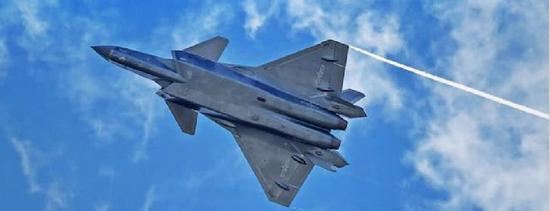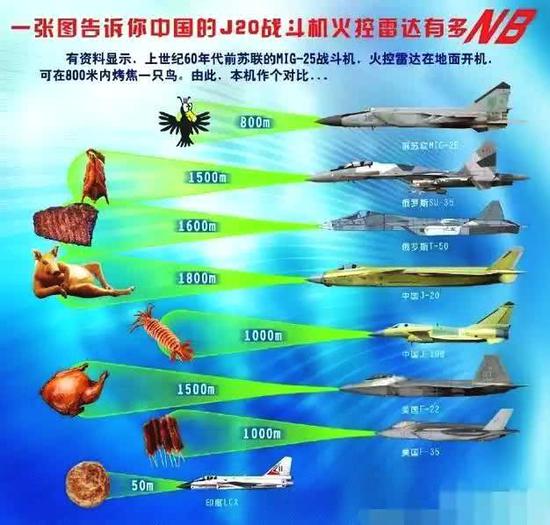You forgot who planted your favorite Opium for Ang Moh to sell? Ah Neh lah! Until Today Taliban still planting near India to have funds to buy bullets!
East India Company planted in India.
https://www.pbs.org/wgbh/pages/frontline/shows/heroin/etc/history.html
c.3400 B.C.
opium throughout history
c.3400 B.C.
The opium poppy is cultivated in lower Mesopotamia. The Sumerians refer to it as Hul Gil, the 'joy plant.' The Sumerians would soon pass along the plant and its euphoric effects to the Assyrians. The art of poppy-culling would continue from the Assyrians to the Babylonians who in turn would pass their knowledge onto the Egyptians.
c.1300 B.C.
In the capital city of Thebes, Egyptians begin cultivation of opium thebaicum,grown in their famous poppy fields.The opium trade flourishes during the reign of Thutmose IV, Akhenaton and King Tutankhamen. The trade route included the Phoenicians and Minoans who move the profitable item across the Mediterranean Sea into Greece, Carthage, and Europe.
c.1100 B.C.
On the island of Cyprus, the "Peoples of the Sea" craft surgical-quality culling knives to harvest opium, which they would cultivate, trade and smoke before the fall of Troy.
c. 460 B.C.
Hippocrates, "the father of medicine", dismisses the magical attributes of opium but acknowledges its usefulness as a narcotic and styptic in treating internal diseases, diseases of women and epidemics.
330 B.C.
Alexander the Great introduces opium to the people of Persia and India.
A.D. 400
Opium thebaicum, from the Egytpian fields at Thebes, is first introduced to China by Arab traders.
1300's
Opium disappears for two hundred years from European historical record. Opium had become a taboo subject for those in circles of learning during the Holy Inquisition. In the eyes of the Inquisition, anything from the East was linked to the Devil.
1500
The Portugese, while trading along the East China Sea, initiate the smoking ofopium. The effects were instantaneous as they discovered but it was a practice the Chinese considered barbaric and subversive.
1527
During the height of the Reformation, opium is reintroduced into European medical literature by Paracelsus as laudanum. These black pills or "Stones of Immortality" were made of opium thebaicum, citrus juice and quintessence of gold and prescribed as painkillers.
1600's
Residents of Persia and India begin eating and drinking opium mixtures for recreational use.
Portugese merchants carrying cargoes of Indian opium through Macao direct its trade flow into China.
1606
Ships chartered by Elizabeth I are instructed to purchase the finest Indian opium and transport it back to England.
1680
English apothecary, Thomas Sydenham, introduces Sydenham's Laudanum, a compound of opium, sherry wine and herbs. His pills along with others of the time become popular remedies for numerous ailments.
1700
The Dutch export shipments of Indian opium to China and the islands of Southeast Asia; the Dutch introduce the practice of smoking opium in a tobacco pipe to the Chinese.
1729
Chinese emperor, Yung Cheng, issues an edictprohibiting the smoking of opium and its domestic sale, except under license for use as medicine.
1750
The British East India Company assumes control of Bengal and Bihar, opium-growing districts of India. British shipping dominates the opium trade out of Calcutta to China.
1753
Linnaeus, the father of botany, first classifies the poppy, Papaver somniferum-- 'sleep-inducing', in his book Genera Plantarum.
1767
The British East India Company's import of opium to China reaches a staggering two thousand chests of opium per year.
1793
The British East India Company establishes a monopoly on the opium trade. All poppy growers in India were forbidden to sell opium to competitor trading companies.
1799
China's emperor, Kia King, bans opium completely, making trade and poppy cultivation illegal.
1800
The British Levant Company purchases nearly half of all of the opium coming out of Smyrna, Turkey strictly for importation to Europe and the United States.
1803
Friedrich Sertuerner of Paderborn, Germany discovers the active ingredient of opium by dissolving it in acid then neutralizing it with ammonia. The result: alkaloids--Principium somniferum or morphine.
Physicians believe that opium had finally been perfected and tamed. Morphine is lauded as "God's own medicine" for its reliablity, long-lasting effects and safety.
1805
A smuggler from Boston, Massachusetts, Charles Cabot, attempts to purchase opium from the British, then smuggle it into China under the auspices of British smugglers.
1812
American John Cushing, under the employ of his uncles' business, James and Thomas H. Perkins Company of Boston, acquires his wealth from smuggling Turkish opium to Canton.
1816
John Jacob Astor of New York City joins the opium smuggling trade. His American Fur Company purchases ten tons of Turkish opium then ships the contraband item to Canton on the Macedonian. Astor would later leave the China opium trade and sell solely to England.
1819
Writer John Keats and other English literary personalities experiment with opium intended for strict recreational use--simply for the high and taken at extended, non-addictive intervals
1821
Thomas De Quincey publishes his autobiographical account of opium addiction, 'Confessions of an English Opium-eater.'
1827
E. Merck & Company of Darmstadt, Germany, begins commercial manufacturing of morphine.
1830
The British dependence on opium for medicinal and recreational use reaches an all time high as 22,000 pounds of opium is imported from Turkey and India.
Jardine-Matheson & Company of London inherit India and its opium from the British East India Company once the mandate to rule and dictate the trade policies of British India are no longer in effect.
1837
Elizabeth Barrett Browning falls under the spell of morphine. This, however, does not impede her ability to write "poetical paragraphs."
March 18, 1839
Lin Tse-Hsu, imperial Chinese commissioner in charge of suppressing the opium traffic, orders all foreign traders to surrender their opium. In response, the British send expenditionary warships to the coast of China, beginning The First Opium War.
1840
New Englanders bring 24,000 pounds of opium into the United States. This catches the attention of U.S. Customs which promptly puts a duty fee on the import.
1841
The Chinese are defeated by the British in the First Opium War. Along with paying a large indemnity, Hong Kong is ceded to the British.
1843
Dr. Alexander Wood of Edinburgh discovers a new technique of administering morphine, injection with a syringe. He finds the effects of morphine on his patients instantaneous and three times more potent.
1852
The British arrive in lower Burma, importing large quantities of opium from India and selling it through a government-controlled opium monopoly.
1856
The British and French renew their hostilities against China in the Second Opium War. In the aftermath of the struggle, China is forced to pay another indemnity. The importation of opium is legalized.
Opium production increases along the highlands of Southeast Asia.
1874
English researcher, C.R. Wright first synthesizes heroin, or diacetylmorphine, by boiling morphine over a stove.
In San Francisco, smoking opium in the city limits is banned and is confined to neighboring Chinatowns and their opium dens.
1878
Britain passes the Opium Act with hopes of reducing opium consumption. Under the new regulation, the selling of opium is restricted to registered Chinese opium smokers and Indian opium eaters while the Burmese are strictly prohibited from smoking opium.
1886
The British acquire Burma's northeast region, the Shan state. Production and smuggling of opium along the lower region of Burma thrives despite British efforts to maintain a strict monopoly on the opium trade.
1890
U.S. Congress, in its earliest law-enforcement legislation on narcotics, imposes a tax on opium and morphine.
Tabloids owned by William Randolph Hearst publish stories of white women being seduced by Chinese men and their opium to invoke fear of the 'Yellow Peril', disguised as an "anti-drug" campaign.
1895
Heinrich Dreser working for The Bayer Company of Elberfeld, Germany, finds that diluting morphine with acetyls produces a drug without the common morphine side effects.Bayer begins production of diacetylmorphine and coins the name "heroin." Heroin would not be introduced commercially for another three years.
Early 1900's
The philanthropic Saint James Society in the U.S. mounts a campaign to supply free samples of heroin through the mail to morphine addicts who are trying give up their habits.
Efforts by the British and French to control opium production in Southeast Asia are successful. Nevertheless, this Southeast region, referred to as the 'Golden Triangle', eventually becomes a major player in the profitable opium trade during the 1940's.
1902
In various medical journals, physicians discuss the side effects of using heroin as a morphine step-down cure. Several physicians would argue that their patients suffered from heroin withdrawal symptoms equal to morphine addiction.
1903
Heroin addiction rises to alarming rates.
1905
U.S. Congress bans opium.
1906
China and England finally enact a treaty restricting the Sino-Indian opium trade.
Several physicians experiment with treatments for heroin addiction. Dr. Alexander Lambert and Charles B. Towns tout their popular cure as the most "advanced, effective and compassionate cure" for heroin addiction. The cure consisted of a 7 day regimen, which included a five day purge of heroin from the addict's system with doses of belladonna delirium.
U.S. Congress passes the Pure Food and Drug Act requiring contents labeling on patent medicines by pharmaceutical companies. As a result, the availabilty of opiates and opiate consumers significantly declines.
1909
The first federal drug prohibition passes in the U.S. outlawing the imporation of opium. It was passed in preparation for the Shanghai Conference, at which the US presses for legislation aimed at suppressing the sale of opium to China.
February 1, 1909
The International Opium Commission convenes in Shanghai. Heading the U.S. delegation are Dr. Hamilton Wright and Episcopal Bishop Henry Brent. Both would try to convince the international delegation of the immoral and evil effects of opium.
1910
After 150 years of failed attempts to rid the country of opium, the Chinese are finally successful in convincing the British to dismantle the India-China opium trade.
Dec. 17, 1914
The passage of Harrison Narcotics Act which aims to curb drug (especially cocaine but also heroin) abuse and addiction. It requires doctors, pharmacists and others who prescribed narcotics to register and pay a tax.
1923
The U.S. Treasury Department's Narcotics Division (the first federal drug agency) bans all legal narcotics sales. With the prohibition of legal venues to purchase heroin, addicts are forced to buy from illegal street dealers.
1925
In the wake of the first federal ban on opium, a thriving black market opens up in New York's Chinatown.
1930's
The majority of illegal heroin smuggled into the U.S. comes from China and is refined in Shanghai and Tietsin.
Early 1940's
During World War II, opium trade routes are blocked and the flow of opium from India and Persia is cut off. Fearful of losing their opium monopoly, the French encourage Hmong farmers to expand their opium production.
1945-1947
Burma gains its independence from Britain at the end of World War II. Opium cultivation and trade flourishes in the Shan states.
1948-1972
Corsican gangsters dominate the U.S. heroin market through their connection with Mafia drug distributors. After refining the raw Turkish opium in Marseille laboratories, the heroin is made easily available for purchase by junkies on New York City streets.
1950's
U.S. efforts to contain the spread of Communism in Asia involves forging alliances with tribes and warlords inhabiting the areas of the Golden Triangle, (an expanse covering Laos, Thailand and Burma), thus providing accessibility and protection along the southeast border of China. In order to maintain their relationship with the warlords while continuing to fund the struggle against communism, the U.S. and France supply the drug warlords and their armies with ammunition, arms and air transport for the production and sale of opium. The result: an explosion in the availability and illegal flow of heroin into the United States and into the hands of drug dealers and addicts.
1962
Burma outlaws opium.
1965-1970
U.S. involvement in Vietnam is blamed for the surge in illegal heroin being smuggled into the States. To aid U.S. allies, the Central Intelligence Agency (CIA) sets up a charter airline, Air America, to transport raw opium from Burma and Laos. As well, some of the opium would be transported to Marseille by Corsican gangsters to be refined into heroin and shipped to the U.S via the French connection. The number of heroin addicts in the U.S. reaches an estimated 750,000.
October 1970
Legendary singer, Janis Joplin, is found dead at Hollywood's Landmark Hotel, a victim of an "accidental heroin overdose."
1972
Heroin exportation from Southeast Asia's Golden Triangle, controlled by Shan warlord, Khun Sa,becomes a major source for raw opium in the profitable drug trade.
July 1, 1973
President Nixon creates the DEA (Drug Enforcement Administration) under the Justice Dept. to consolidate virtually all federal powers of drug enforcement in a single agency.
Mid-1970's
Saigon falls. The heroin epidemic subsides. The search for a new source of raw opium yields Mexico's Sierra Madre. "Mexican m&d" would temporarily replace "China White" heroin until 1978.
1978
The U.S. and Mexican governments find a means to eliminate the source of raw opium--by spraying poppy fields with Agent Orange. The eradication plan is termed a success as the amount of "Mexican m&d" in the U.S. drug market declines. In response to the decrease in availability of "Mexican m&d", another source of heroin is found in the Golden Crescent area--Iran, Afghanistan and Pakistan, creating a dramatic upsurge in the production and trade of illegal heroin.
1982
Comedian John Belushi of Animal House fame, dies of a heroin-cocaine--"speedball" overdose.
Sept. 13, 1984
U.S. State Department officials conclude, after more than a decade of crop substitution programs for Third World growers of marijuana, coca or opium poppies, that the tactic cannot work without eradication of the plants and criminal enforcement. Poor results are reported from eradicationprograms in Burma, Pakistan, Mexico and Peru.
1988
Opium production in Burma increases under the rule of the State Law and Order Restoration Council (SLORC), the Burmese junta regime.
The single largest heroin seizure is made in Bangkok. The U.S. suspects that the 2,400-pound shipment of heroin, en route to New York City, originated from the Golden Triangle region, controlled by drug warlord, Khun Sa.
1990
A U.S. Court indicts Khun Sa, leader of the Shan United Army and reputed drug warlord, on heroin trafficking charges. The U.S. Attorney General's office charges Khun Sa with importing 3,500 pounds of heroin into New York City over the course of eighteen months, as well as holding him responsible for the source of the heroin seized in Bangkok.
1992
Colombia's drug lords are said to be introducing a high-grade form of heroin into the United States.
1993
The Thai army with support from the U.S. Drug Enforcement Agency (DEA) launches its operation to destroy thousands of acres of opium poppies from the fields of the Golden Triangle region.
October 31, 1993
Heroin takes another well-known victim. Twenty-three-year-old actor River Phoenix dies of a heroin-cocaine overdose, the same "speedball" combination that killed comedian John Belushi.
January 1994
Efforts to eradicate opium at its source remains unsuccessful. The Clinton Administration orders a shift in policy away from the anti- drug campaigns of previous administrations. Instead the focus includes "institution building" with the hope that by "strengthening democratic governments abroad, [it] will foster law-abiding behavior and promote legitimate economic opportunity."
April 1994
Kurt Cobain, lead singer of the Seattle-based alternative rock band, Nirvana, dies of heroin-related suicide.
1995
The Golden Triangle region of Southeast Asia is now the leader in opium production, yielding 2,500 tons annually. According to U.S. drug experts, there are new drug trafficking routes from Burma through Laos, to southern China, Cambodia and Vietnam.
January 1996
Khun Sa, one of Shan state's most powerful drug warlords, "surrenders" to SLORC. The U.S. is suspicious and fears that this agreement between the ruling junta regime and Khun Sa includes a deal allowing "the opium king" to retain control of his opium trade but in exchange end his 30-year-old revolutionary war against the government.
November 1996
International drug trafficking organizations, including China, Nigeria, Colombia and Mexico are said to be "aggressively marketing heroin in the United States and Europe."














